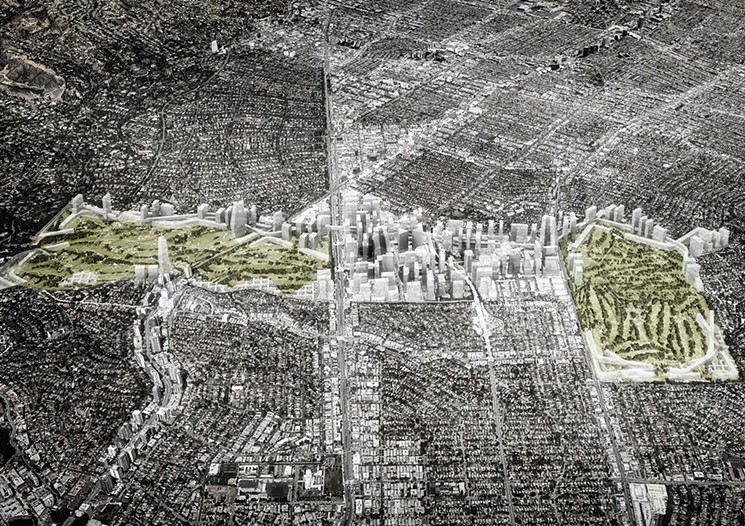
Tenants Under Siege: Inside New York City’s Housing Crisis (Michael Greenberg, New York Review of Books) “At the town hall meeting, the mayor, trying to explain why he hasn’t set aside more units for those near the poverty line, said, ‘There are swamps of people who make less than $40,000 a year. People who make $50,000 need help, too.’ To a renter in the audience anxious about her future, he admitted, with a touch of sadness, that his housing policy ‘may not help you personally. New York may not be exactly the same city you’ve known.'”
How Vancouver became China’s aviation hub to the West (Howard Slutsken, CNN Travel) “Vancouver also holds the title of the ‘most Asian city outside of Asia,’ consisting mainly of Chinese, Indians and Filipinos, according to Canadian census data. In 2017, Statistics Canada projected that by 2036 around 78% of immigrants in Vancouver would be from Asia. Vancouver has become such a popular destination for Chinese investors looking to spend their money abroad that the provincial government in 2016 levied a 15% tax on foreign home buyers.”
20 Ways to Fix Los Angeles (Hillel Aron, Los Angeles Weekly) “The first law in need of reform requires that every new building provide a minimum number of parking spaces, which, according to developer Mott Smith, can be prohibitively expensive. Only about a third of households in Los Angeles have more than one car, yet apartment developers usually must secure 2.5 parking spaces for every housing unit they construct. Doing away with or at least easing the parking requirement would lead to more housing units being built, Smith and others says. As for people living in a building without parking, they could be forced to pay for it — or they could decide to go carless.”
Why Is the Alt-Right So Angry About Architecture? (Amanda Kolson Hurley, Citylab) “This being Infowars, Watson turns the rhetoric up to 11. The founders of Modernism were ‘the social justice warriors of their time,’ he says, ‘aesthetic terrorists.’ Michael Graves’ Denver Public Library is an ‘atrocity.’ Boston City Hall is a ‘callous abomination.’ The Whitney Museum in New York is an ‘abortion of a building.'”
From brutalism to Borgen to blogging: how the language of cities has changed (Oliver Farry, New Statesman) “It may even be this changing face of the urban environment and of the perception of cities that is driving this interest. After decades of being associated with social decay, alienation and violence, cities have enjoyed a newfound good press in the past 15 to 20 years. Gentrification is the most obvious vector but there is more than simply that to explain how people are more comfortable in cities. Falling crime rates, particularly for violent crime, on both sides of the Atlantic, have encouraged people to be adventurous and more attentive to their surroundings.”
Here a City Shall Be Wrought (Daniel Brook, Harper’s) “We walked up the hill past the empty incense stand. At the top, the path opened onto the school’s recess yard, which had survived the quake and the subsequent bulldozing and was now littered with rescue vehicles that had pulled out buried survivors. The square had only a temporary, movable blue-and-white sign reading memorial park in Chinese. What it was memorializing it did not say. I asked Zhang why she thought the square lacked a permanent, official plaque, but, after hesitating for a moment, she decided not to respond.”
Save the Kosciuszko! A Cri de Coeur for an Unloved Bridge (Sean Wilsey, New York Times) “I propose that it stay as a gathering place for all of us, especially those who never gather: the shouters, the chain smokers, the lotto-card scrapers and stressed-out cursers who’ve rumbled across it for 78 years. It should stand as an observation platform, a stubby Eiffel Tower (which it resembles) of the other boroughs. A High Line for schlubs. A High Line for everyone.” (See also my interview with Sean Wilsey on the Los Angeles Review of Books podcast.)
Philip Roth’s Newark (Steven Malanga, City Journal) “Roth’s stories reject the easy, conspiratorial view that Newark and other cities started to die because of a plot against them by government planners in favor of growing suburbs, exacerbated by white racism. In Roth’s novels, Newark’s Jews are on the move long before government-financed highways stretch into the suburbs or civil unrest wracks their city. And Roth makes clear that they’re following the grown children of German and Irish immigrants, who’ve already decamped in search of sprawling homes, big backyards, and other outward signs of the American dream.”